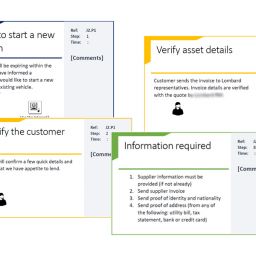
This is part 2 of a two-part series. If you missed part 1 you can read it here.
Financial services sites – and banks in particular – seem to come in for some criticism of their websites. This is partly justified – but there are some simple steps that can help remedy the problems. Banking apps and sites don’t need to be dry and dysfunctional. Going through a particular process can help in focusing your online offering and significantly improving user experience.
Examine your customers
Looking at who your customers are and how they use your site can tell you a lot about what is needed. Conduct a customer mapping exercise and identify the key personas in your customer base. When choosing personas make sure you cover the range of likely users. Try to select from different age groups and between consumer and business. Having a mix of genders is also useful. This will help you to characterise their online needs and journeys and point up what they like and dislike. This might mean gathering information and making assumptions about your audience. But if you go into enough detail you should be able to meet this process with confidence.
Find the emotional crunch points
Users respond to good design – but they remember bad experiences more. By analysing users’ wants, needs, likes and dislikes you should be able to identify important factors. Focus on meeting these requirements and your site will become more friendly and user experience more pleasurable and efficient. You can use a technique called empathy mapping to achieve this. This matches scenarios and situations to processes and services to help you judge needs and if you are meeting them. Addressing the key pain points will help you improve your service and user experience.
Look at the customer journey
Use the key personas and empathy mapping to create customer journeys. These should begin to reveal how customers use your services and what they want and expect. By putting all the information you have gathered together you should be getting a picture of who your users are and what they want. Concentrate on making their journey as fluid and easy as possible. Make the important points (especially perceived difficulties or frustrations) your main focus in design.
Techniques for information architecture
The information architecture of your site should flow from these observations and analyses. Various techniques can be employed to achieve this. These include:
- Card sorting
- Wire framing
- Prototyping
These topics are dealt with in some detail in other parts of this blog. The overall aim here is to find what customers are doing and what they are looking for. You then need to match your service and site to reflect this use and provide an emotionally satisfying user experience. The key to all of this is researching and understanding your users.
If you would like to know more about developing better financial services products, call us on +44(0)800 024624 or email us at hello@ux247.com.






